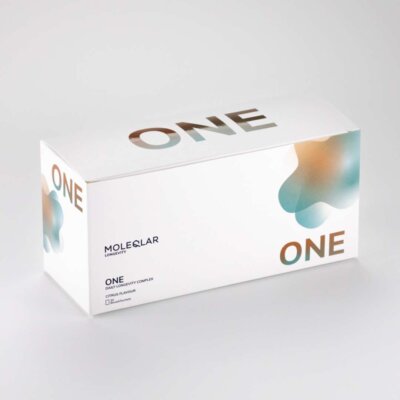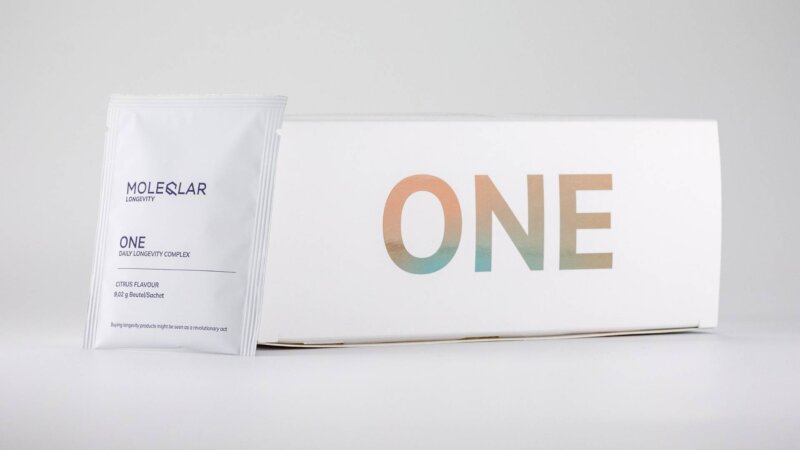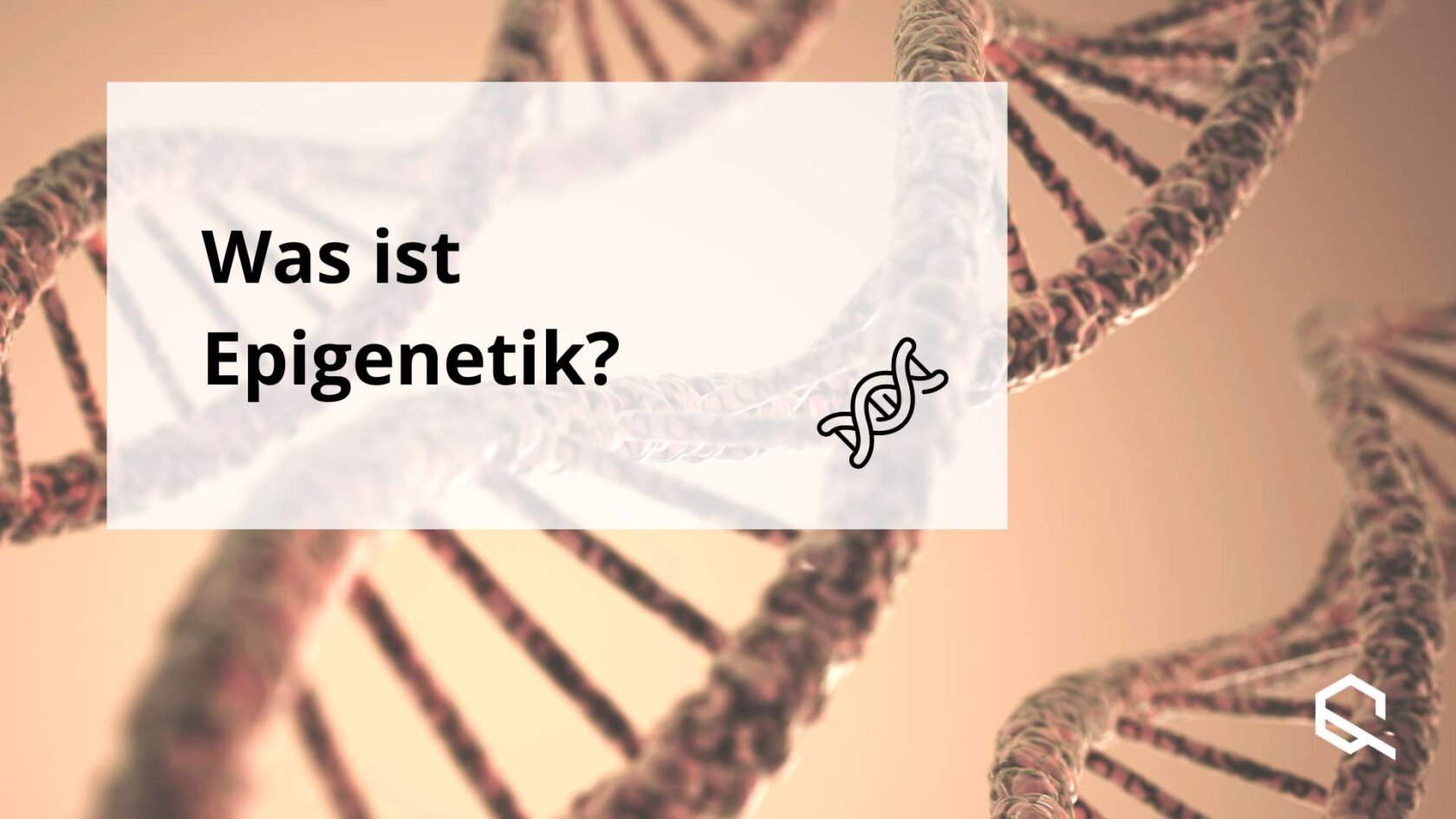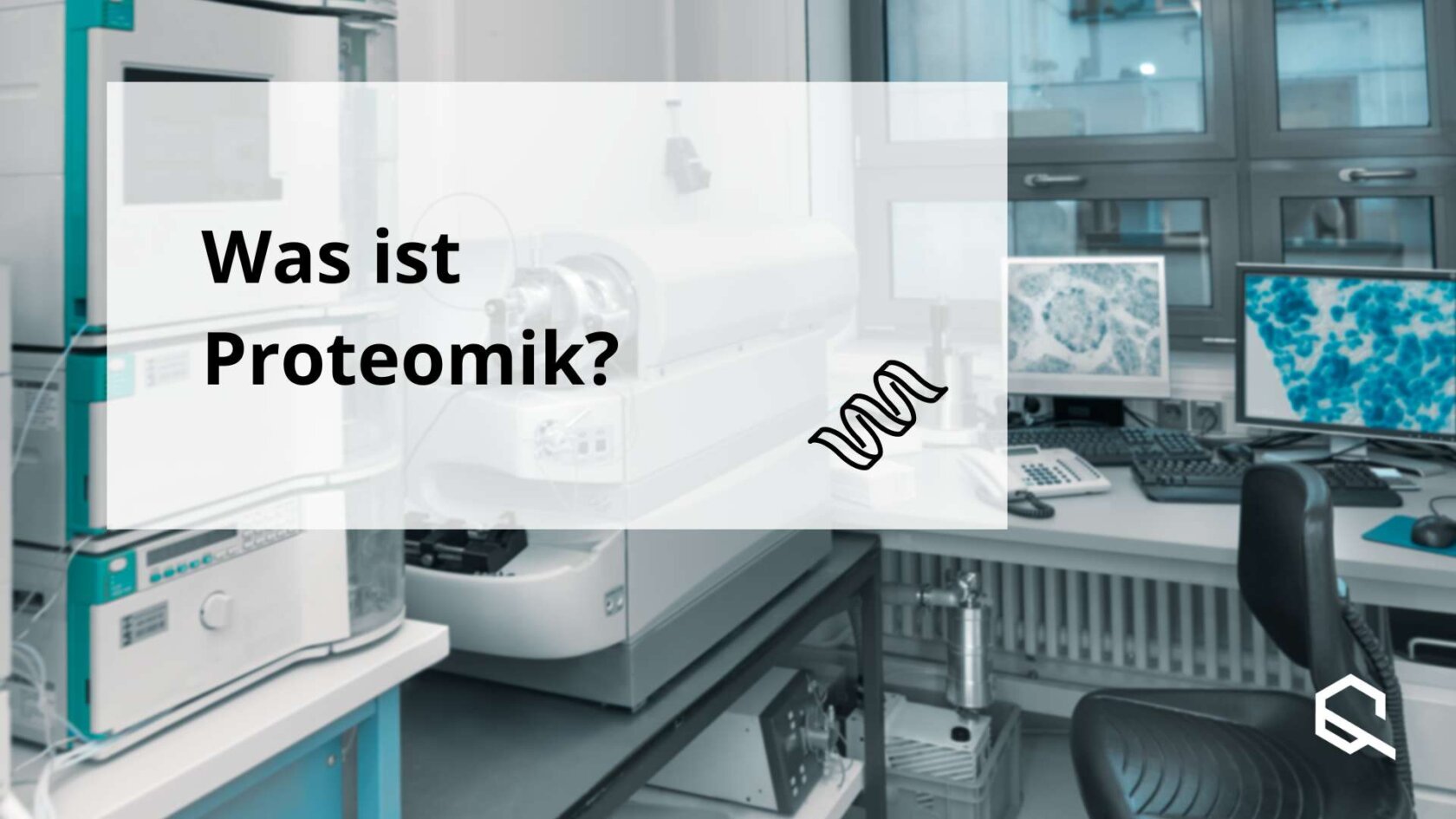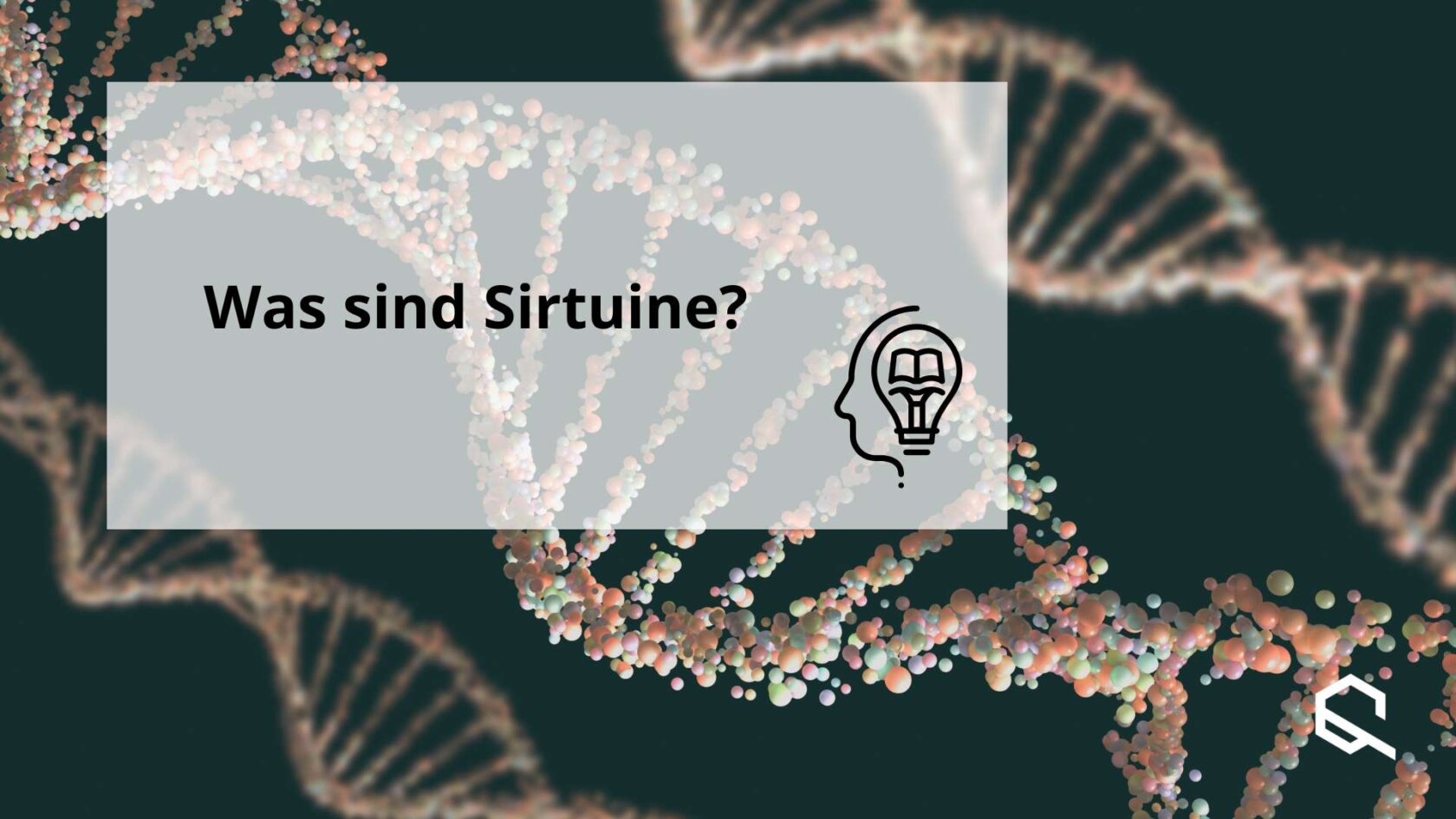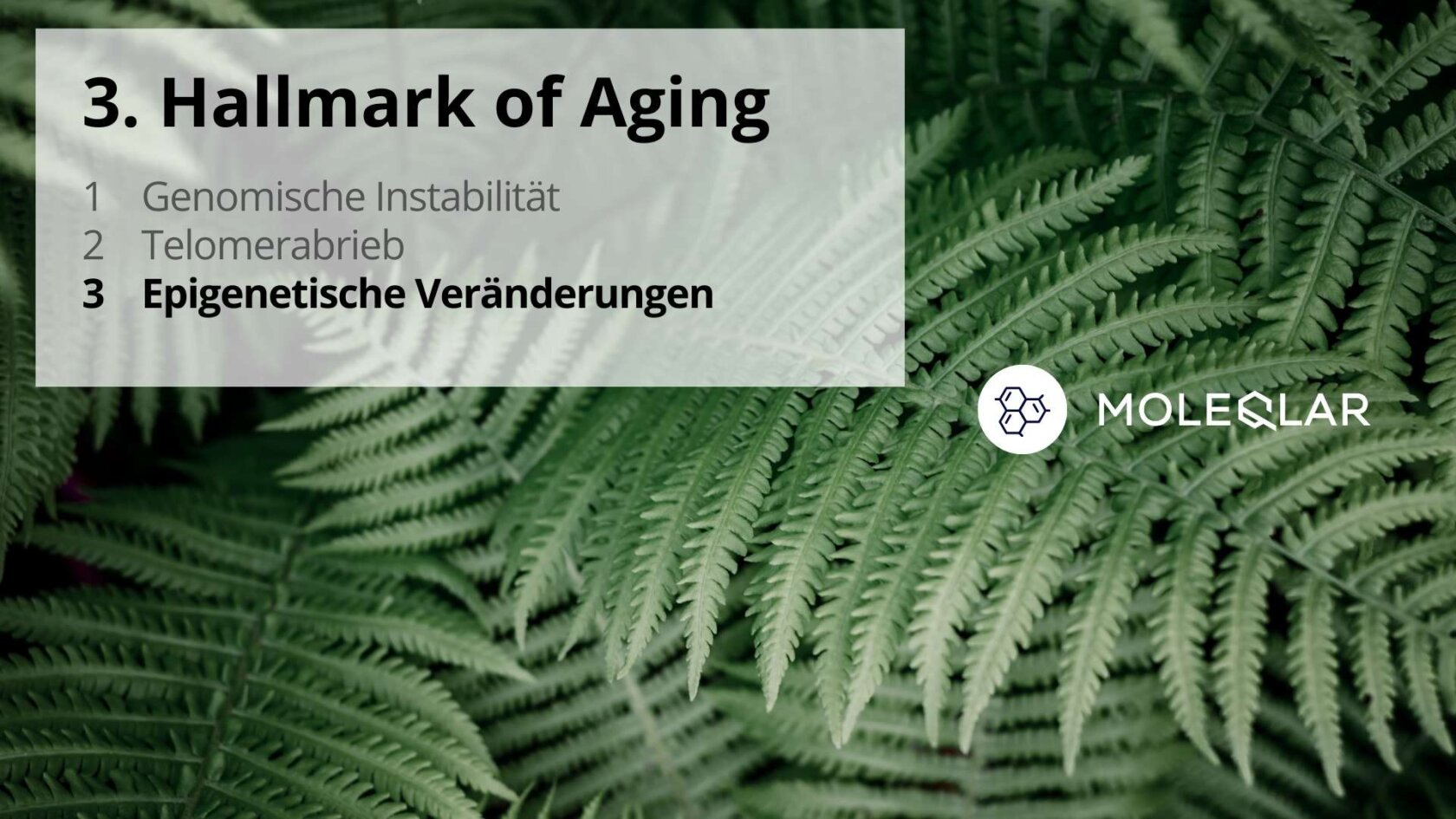The term anti-ageing can be found in particular on product descriptions as well as in numerous colourful glossy magazines and is increasingly used as an overarching term for marketing purposes in the beauty and health industry. Exclusive creams and nutritional supplements not infrequently promise eternal youth and the immediate interruption of the ageing process. Never again wrinkles, frail bones or chronic diseases are supposed to be the goal. But can the progression of ageing really be tricked so easily and how can biological age be scientifically determined? We clarify the answers to these exciting questions in this article.
According to our current state of knowledge, the process of human ageing cannot yet be fully explained. However, there are already fundamental findings in this context. According to this, genetic and epigenetic factors in particular are decisive for the ageing process in humans. One of the best-known scientists who has specialised in the study of the ageing process is Professor David Sinclair. The Australian ageing researcher and geneticist from Harvard University has been working for decades on the question of how the process of physical ageing can be slowed down. As part of his research, he is intensively looking for agents that can slow down, stop or even reverse the ageing process. He tests the preparations on himself, his wife and his three dogs, among others. Prof. Sinclair, who is 50 years old, often says that he feels more like a 30-year-old man and thus feels much younger than the age on his passport says. In addition to chronological age as a pure indication of time, there is also the biological age of a person. This age results from the physical and mental state of development or decay. Accordingly, the biological age can deviate from the pure sum of the years of life.
An objective method for estimating biological age is the so-called Horvath Clock. This method is also called the Epigenetic Clock and was developed by Professor Steve Horvath and his colleagues. The age researcher and geneticist at the University of California uses DNA analyses for his biochemical test procedure to determine human age. Essentially, DNA methylation plays a decisive role here. This involves chemical changes to the basic building blocks of the genetic material of a cell. The result of the age estimation is therefore also called DNA methylation age. The result of the age estimation by the DNA analyses is comparatively accurate and can be precisely determined to within a few years of the biological age. A saliva sample is sufficient for the test. This means that the non-invasive test procedure has significant advantages over X-rays or blood samples for determining age.
The basis for the Horvarth Clock, which was presented in 2011, emerges from epigenetics, which uses individual chemical and structural changes to the genome (genetic material) to obtain specific information. With increasing age, for example, characteristic epigenetic changes occur, which allows conclusions to be drawn about a person's biological age. From this information, Horvath and his colleagues have been able to develop a special algorithm. The algorithm can be used to determine the age of different tissues from the same person. Therefore, it is also possible to identify tissues in the body that show evidence of increased or decreased age. Furthermore, Horvath and his colleagues were able to show that the DNA methylation age can predict life expectancy, among other things.
To determine the biological age, there are self-tests for which a saliva sample is sufficient. Such tests are freely available on the internet from 199 euros and do not require a doctor's referral or order.
In addition to the Horvath Clock, other epigenetic clocks are available, e.g. PhenoAge or GrimAge. Both test procedures are used, among other things, to determine and predict life expectancy as well as to calculate the remaining time that can be lived in perfect health. In summary, epigenetic clocks such as the Horvath Clock offer a unique opportunity to better understand the ageing process of people and thus help medical practitioners and scientists worldwide to research the ageing process.
Epigenetic clocks can make statements about whether a person is ahead of his chronological age or still below the sum of his pure years of life. Age and especially the speed of ageing are particularly related to individual habits and personal lifestyle. Subsequently, ageing is influenced by factors such as diet, physical activity or the social environment. Excessive consumption of harmful stimulants such as alcohol have a negative influence on biological age, while health-promoting factors such as regular exercise and a balanced and healthy diet have a positive effect on the ageing process. According to current knowledge, scientists assume that a person's lifespan depends 25 percent on genes and 75 percent on lifestyle. Therefore, biological age can also be strongly influenced by a healthy lifestyle.
Epigenetic clocks can already help today to better understand diseased and healthy cells that have changed due to age. Thus, in principle, it is possible to better predict and estimate the risk for certain age-related diseases. The algorithms of the test procedures are continuously being developed and optimised in order to constantly improve the accuracy of the results. Especially in an ageing population due to demographic change, epigenetic clocks will become increasingly important in medicine.
Sources used
Superman and the Vitamin B3 Family
Denu, J. M. (2007). Vitamins and aging: pathways to NAD+ synthesis. Cell, 129(3), 453-454.
OECD, P. G. D. (2013). What future for health spending? OECD Economics Department Policy Notes, No. 19.
Uddin, G. M., Yongson, N., Sinclair, D., & Morris, M. (2015). Effects of High Fat Diet Induced Obesity on Mitochondrial Biogenesis and Function-Impact of Exercise or Nicotinamide Mononucleotide (NMN). The FASEB Journal, 29(1_supplement), 777-8.
Zhang, H. et al. (2016). NAD+ repletion improves mitochondrial and stem cell function and enhances life span in mice. Science, 352(6292), 1436-1443.
Hwang, E. S., & Hwang, S. Y. (2018). Cellular NAD⁺ level: a key determinant of mitochondrial quality and health. Annals of Geriatric Medicine and Research, 21(4), 149-157.
Kirkland, J. B., & Meyer-Ficca, M. L. (2018). Niacin. In Advances in food and nutrition research (Vol. 83, pp. 83-149). Academic Press.
Irie, J. et al. (2020). Effect of oral administration of nicotinamide mononucleotide on clinical parameters and nicotinamide metabolite levels in healthy Japanese men. Endocrine journal, 67(2), 153-160.
NR vs. NMN - blue pill vs. red pill
Yoshino, J., Mills, K. F., Yoon, M. J., & Imai, S. I. (2011). Nicotinamide mononucleotide, a key NAD+ intermediate, treats the pathophysiology of diet-and age-induced diabetes in mice. Cell metabolism, 14(4), 528-536.
Cantó, C. et al. (2012). The NAD+ precursor nicotinamide riboside enhances oxidative metabolism and protects against high-fat diet-induced obesity. Cell metabolism, 15(6), 838-847.
Chi, Y., & Sauve, A. A. (2013). Nicotinamide riboside, a trace nutrient in foods, is a vitamin B3 with effects on energy metabolism and neuroprotection. Current Opinion in Clinical Nutrition & Metabolic Care, 16(6), 657-661.
Mills, K. F. et al. (2016). Long-term administration of nicotinamide mononucleotide mitigates age-associated physiological decline in mice. Cell metabolism, 24(6), 795-806.
Trammell, S. A. et al. (2016). Nicotinamide riboside is uniquely and orally bioavailable in mice and humans. Nature communications, 7(1), 1-14.
Wang, X., Hu, X., Yang, Y., Takata, T., & Sakurai, T. (2016). Nicotinamide mononucleotide protects against β-amyloid oligomer-induced cognitive impairment and neuronal death. Brain research, 1643, 1-9.
Zhang, H. et al. (2016). NAD+ repletion improves mitochondrial and stem cell function and enhances life span in mice. Science, 352(6292), 1436-1443.
Airhart, S. E. et al. (2017). An open-label, non-randomized study of the pharmacokinetics of the nutritional supplement nicotinamide riboside (NR) and its effects on blood NAD+ levels in healthy volunteers. PloS one, 12(12).
Hwang, E. S., & Hwang, S. Y. (2018). Cellular NAD⁺ level: a key determinant of mitochondrial quality and health. Annals of Geriatric Medicine and Research, 21(4), 149-157.
Grozio, A. et al. (2019). Slc12a8 is a nicotinamide mononucleotide transporter. Nature metabolism, 1(1), 47-57.
Tarantini, S. et al. (2019). Nicotinamide mononucleotide (NMN) supplementation rescues cerebromicrovascular endothelial function and neurovascular coupling responses and improves cognitive function in aged mice. Redox biology, 24, 101192.
Irie, J. et al. (2020). Effect of oral administration of nicotinamide mononucleotide on clinical parameters and nicotinamide metabolite levels in healthy Japanese men. Endocrine journal, 67(2), 153-160.
Podcast David Sinclair
Is ageing a disease?
Podcast UIBK
World Report on Ageing and Health (WHO)
Specht, J., Egloff, B., & Schmukle, S. C. (2011). Stability and change of personality across the life course: The impact of age and major life events on mean-level and rank-order stability of the Big Five. Journal of Personality and Social Psychology, 101(4), 862-882.
Gerstorf, D., Hoppmann, C. A., Löckenhoff, C. E., Infurna, F. J., Schupp, J., Wagner, G. G., & Ram, N. (2016). Terminal decline in well-being: The role of social orientation. Psychology and Aging, 31(2), 149.
Kruse, A. (2017). Life phase of old age: vulnerability and maturity. Springer-Verlag.
https://www.pschyrembel.de/Krankheit/K0C8J
Ageing is what you make of it
Robine, J. M., Allard, M., Herrmann, F. R., & Jeune, B. (2019). The real facts supporting Jeanne Calment as the oldest ever human. The Journals of Gerontology: Series A, 74(Supplement_1), S13-S20.
https://www.smithsonianmag.com/smart-news/oldest-person-world-turns-117-180973930/
https://www.7jahrelaenger.de/7jl/magazin/jedes-dritte-maedchen-wird-100-jahre-alt-55020
https://sz-magazin.sueddeutsche.de/gesundheit/das-ist-ja-der-gipfel-79492
Antioxidants
Bjelakovic, G., Nikolova, D., Gluud, L. L., Simonetti, R. G., & Gluud, C. (2007). Mortality in randomized trials of antioxidant supplements for primary and secondary prevention: systematic review and meta-analysis. Jama, 297(8), 842-857.
Lehman-McKeeman, L. D. (2013). Biochemical and Molecular Basis of Toxicity. In Haschek and Rousseaux's Handbook of Toxicologic Pathology (pp. 15-38). Academic Press.
Tsopmo, A., Awah, F. M., & Kuete, V. (2013). Lignans and stilbenes from African medicinal plants. In Medicinal plant research in Africa (pp. 435-478). Elsevier.
Bjelakovic, G., Nikolova, D., & Gluud, C. (2014). Antioxidant supplements and mortality. Current Opinion in Clinical Nutrition & Metabolic Care, 17(1), 40-44.
Kubo, E., Chhunchha, B., Singh, P., Sasaki, H., & Singh, D. P. (2017). Sulforaphane reactivates cellular antioxidant defence by inducing Nrf2/ARE/Prdx6 activity during aging and oxidative stress. Scientific reports, 7(1), 1-17.
Zhou, J., Ci, X., Ma, X., Yu, Q., Cui, Y., Zhen, Y., & Li, S. (2019). Pterostilbene activates the Nrf2-dependent antioxidant response to ameliorate arsenic-induced intracellular damage and apoptosis in human keratinocytes. Frontiers in pharmacology, 10.
Longevity paths
Salminen, A., Huuskonen, J., Ojala, J., Kauppinen, A., Kaarniranta, K., & Suuronen, T. (2008). Activation of innate immunity system during aging: NF-kB signaling is the molecular culprit of inflamm-aging. Ageing research reviews, 7(2), 83-105.
Zineldeen, D. H., Uranishi, H., & Okamoto, T. (2010). NF-kappa B signature on the aging wall. Current drug metabolism, 11(3), 266-275.
Salminen, A., & Kaarniranta, K. (2012). AMP-activated protein kinase (AMPK) controls the aging process via an integrated signaling network. Ageing research reviews, 11(2), 230-241.
Lamming, D. W., Ye, L., Sabatini, D. M., & Baur, J. A. (2013). Rapalogs and mTOR inhibitors as anti-aging therapeutics. The Journal of clinical investigation, 123(3), 980-989.
Burkewitz, K., Zhang, Y., & Mair, W. B. (2014). AMPK at the nexus of energetics and aging. Cell metabolism, 20(1), 10-25.
Cartwright, T., Perkins, N. D., & Wilson, C. L. (2016). NFKB1: a suppressor of inflammation, ageing and cancer. The FEBS journal, 283(10), 1812-1822.
Kida, Y., & Goligorsky, M. S. (2016). Sirtuins, cell senescence, and vascular aging. Canadian Journal of Cardiology, 32(5), 634-641.
Wątroba, M., Dudek, I., Skoda, M., Stangret, A., Rzodkiewicz, P., & Szukiewicz, D. (2017). Sirtuins, epigenetics and longevity. Ageing research reviews, 40, 11-19.
Weichhart, T. (2018). mTOR as regulator of lifespan, aging, and cellular senescence: a mini-review. Gerontology, 64(2), 127-134.
Stallone, G., Infante, B., Prisciandaro, C., & Grandaliano, G. (2019). mtor and aging: An old fashioned dress. International journal of molecular sciences, 20(11), 2774.
Fasting - perspective for a long life
Longo, V. D., & Mattson, M. P.. (2014). Fasting: molecular mechanisms and clinical applications. Cell metabolism, 19(2), 181-192.
Mitchell, S. J., Bernier, M., Mattison, J. A., Aon, M. A., Kaiser, T. A., Anson, R. M., ... & de Cabo, R. (2019). Daily fasting improves health and survival in male mice independent of diet composition and calories. Cell metabolism, 29(1), 221-228.
de Cabo, R., Carmona-Gutierrez, D., Bernier, M., Hall, M. N., & Madeo, F. (2014). The search for antiaging interventions: from elixirs to fasting regimens. Cell, 157(7), 1515-1526.
Longo, V. D., & Panda, S. (2016). Fasting, circadian rhythms, and time-restricted feeding in healthy lifespan. Cell metabolism, 23(6), 1048-1059.
Velingkaar, N., Mezhnina, V., Poe, A., Makwana, K., Tulsian, R., & Kondratov, R. V. (2020). Reduced caloric intake and periodic fasting independently contribute to metabolic effects of caloric restriction. Aging Cell, 19(4), e13138.
Balasubramanian, P., Howell, P. R., & Anderson, R. M. (2017). Aging and caloric restriction research: a biological perspective with translational potential. EBioMedicine, 21, 37-44.
